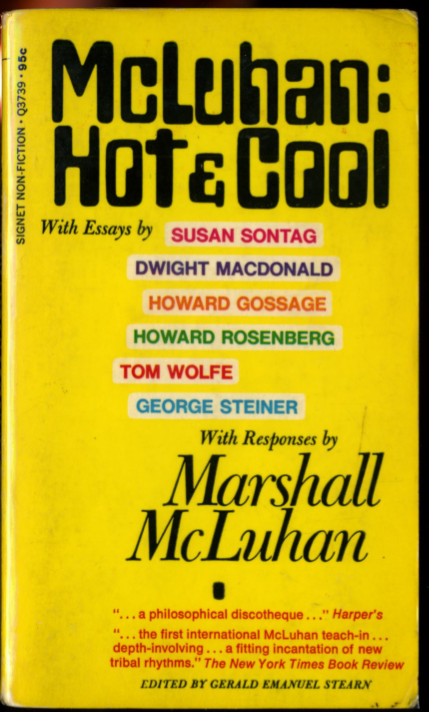Bob Snyder: Music and Memory: An Introduction (2001)
Filed under book | Tags: · cognition, memory, music, sound recording

This far-ranging book shows how human memory influences the organization of music. The book is divided into two parts. The first part presents basic ideas about memory and perception from cognitive psychology and, to some extent, cognitive linguistics. Topics include auditory processing, perception, and recognition. The second part describes in detail how the concepts from the first part are exemplified in music. The presentation is based on three levels of musical experience: event fusion (the formation of single musical events from acoustical vibrations in the air, on a time scale too small to exhibit rhythm), melody and rhythm, and form. The focus in the latter is on the psychological conditions necessary for making large-scale—that is, formal—boundaries clear in music rather than on traditional musical forms. The book also discusses the idea that much of the language used to describe musical structures and processes is metaphorical. It encourages readers to consider the possibility that the process of musical composition can be “a metaphorical transformation of their own experience into sound.”
The book also touches on unresolved debates about psychological musical universals, information theory, and the operation of neurons. It requires no formal musical training and contains a glossary and an appendix of listening examples.
Publisher MIT Press, 2001
ISBN 0262692376, 9780262692373
313 pages
Gerald Emanuel Stearn (ed.): McLuhan: Hot & Cool: A Primer for the Understanding of & a Critical Symposium with a Rebuttal by McLuhan (1967)
Filed under book | Tags: · global village, information, literacy, mass media, media theory, photography, print, radio, semiotics, speech, technology, television, text, writing

“A brilliant amalgam of articles, discussions, essays and interviews with and about the Pop Oracle himself, The Complete McLuhan: the most controversial thinker of the electronic age.” (from the back cover)
With essays by Howard Luck Gossage, Tom Wolfe, John Culkin, SJ., Dean Walker, Kenneth E. Boulding, George P. Elliott, Rudolph E. Morris, Walter Ong, SJ., Ammunition (C.I.O.), William Blissett, Harley Parker, Robert Shafer, John Freund, Patrick D. Hazard, Dell Hymes, Frank Kermode, A. Alvarez, Dan M. Davin, Raymond Williams, Harold Rosenberg, Dwight Macdonald, Christopher Ricks, Jack Behar, Ben Lieberman, John M. Johansen, George Steiner, Jonathan Miller, Andrew Forge, Benjamin DeMott, Susan Sontag; responses by Marshall McLuhan; and an interview by Gerald E. Stearn with McLuhan.
Publisher The Dial Press, New York, 1967
Signet Non-Fiction series, Q3739
312 pages
PDF (no OCR)
Comment (1)John F Cline: Permanent Underground: Radical Sounds and Social Formations in 20th Century American Musicking (2012)
Filed under thesis | Tags: · 1960s, music, music history, music theory, musicking, noise
Musical labor entered a new phase of alienation following the advent of recording technology in the late 19th century. Whereas prior to recording musicians had a relatively direct relationship with their audience—the sum of the two groups constituting “musicking”—sound reproduction created a spatial and temporal dislocation between them. Most narratives of American popular music trace out a particular genre formation, and relate it to the culture from whence it emerged. By contrast, this dissertation begins from the point where musicking began to disengage from commodification, both at the level of social formation and of the creation of sound itself. Drawing on anthropologist Pierre Clastres’ notion of “Anti-State” modes of organization and cultural critic Ivan Illich’s concept of “conviviality,” or a human-centered rather than mass productionoriented use of tools—in this case musical instruments both handmade and modified—each chapter of this project tackles a different dimension of the quest for autonomous musicking, or a “permanent underground.” Chapter 1 examines the organizational principles that have run in parallel to the bureaucratic, capitalist manifestation of a “music industry” in the 20th century. Beginning with a critique of either/or fallacy of the opposition posited between “modernism” and “nostalgia,” the reminder of the chapter demonstrates the reconciliation between these two aesthetic and political positions; topics include the seizure of public space by itinerant blues musicians in the rural-industrial prewar South, the self-released recordings of gospel artists after WWII, the formation of experimental jazz collectives in the 1960s, and the relationship between psychedelic music and cults/communes in the 1960s. Chapter 2 critiques the function of genre in musicking as means to a reproducible sonic commodity, and argues for “noise” as an aesthetic intervention that disrupts the saleable nature of music—a political act in itself. Chapter 3 suggests several strategies for achieving “noise.” These include the repurposing of industrial machines as musical instruments, the incorporation of foreign musical traditions, and the use of collage as a formal principle. The final chapter profiles six collectives that have emerged since the late 1960s that adhere to the aesthetic and political values established throughout this dissertation.
Dissertation
Faculty of the Graduate School, The University of Texas at Austin, May 2012
Supervisor: Mark C. Smith
520 pages

